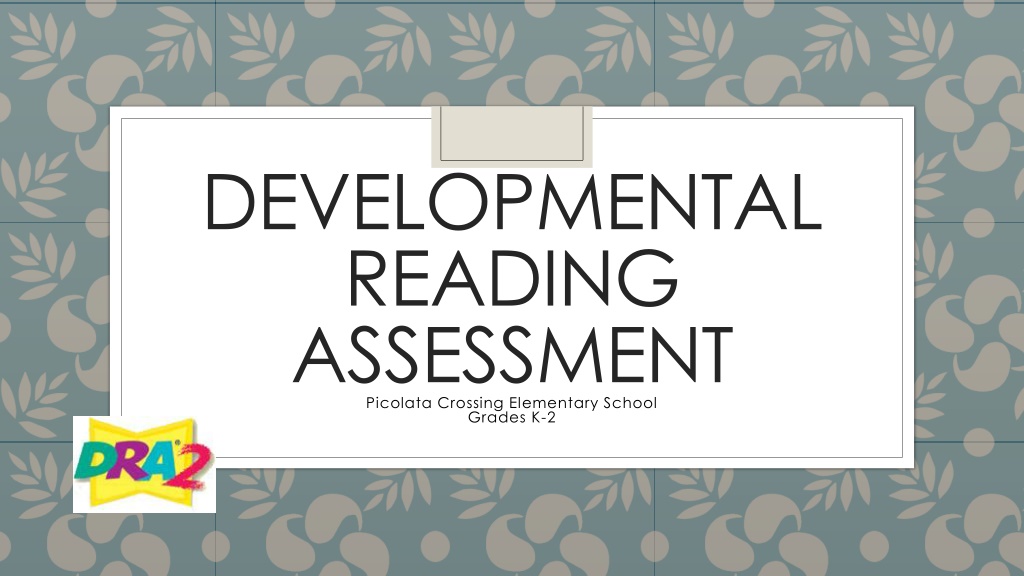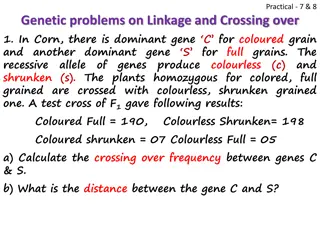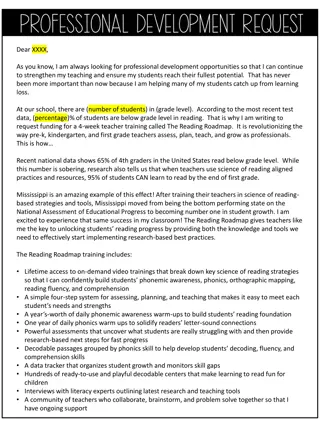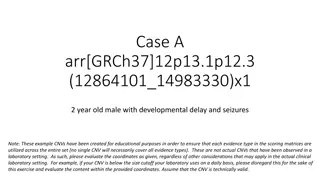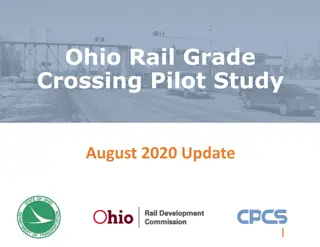Developmental Reading Assessment at Picolata Crossing Elementary
Implementing the Developmental Reading Assessment (DRA) at Picolata Crossing Elementary School grades K-2 to evaluate students' reading accuracy, fluency, and comprehension. Teachers use DRA data for differentiated instruction, ensuring materials match students' independent and instructional levels. The assessment cycle involves assessing, analyzing, reflecting, teaching, learning, and planning. The DRA serves to diagnose student needs, track progress, inform parents, and prepare students for academic success. Administered at least twice yearly, the DRA assesses reading achievement in wide reading, oral reading fluency, and comprehension skills and strategies.
Download Presentation

Please find below an Image/Link to download the presentation.
The content on the website is provided AS IS for your information and personal use only. It may not be sold, licensed, or shared on other websites without obtaining consent from the author. Download presentation by click this link. If you encounter any issues during the download, it is possible that the publisher has removed the file from their server.
E N D
Presentation Transcript
DEVELOPMENTAL READING ASSESSMENT Picolata Crossing Elementary School Grades K-2
Learning Goal Teachers will be able to administer the Developmental Reading Assessment (DRA) to determine student s reading accuracy, fluency, and comprehension. Teachers will utilize data received from the DRA assessment to drive differentiated instruction.
Students need instruction and materials at their independent and instructional levels. 85% of everything children read should be easy for them 15% should be a bit of a challenge 0% at the difficult level because it provides no purpose for learning Richard Allington 1996 So, how do we determine the independent and instructional levels of our students?
DRA Assessment Cycle Assessing Performance Analyzing/ Reflecting Teaching/ Learning Planning Instruction
Purpose of the DRA - diagnose student needs and plan for instruction -to access levels of performance on a variety of crucial skills and strategies. -prepare students to be successful in the classroom and on standardized tests. -document progress across the primary and intermediate years (provides a continuum of their progress). -keep parents informed about the levels of student achievement.
DRA Assessment Tool Should be administered at least 2 times per year (can be done more frequently to further guide instruction/ leveling). Rubrics can be used with any text throughout the year Continuum guides instruction
Assesses Student Reading Achievement in: Wide Reading or Engagement (evidence in reading) Oral reading/ Fluency Comprehension skills and strategies
Reading Engagement Survey While the score from this portion does NOT go into the final score to determine reading level, this survey provides valuable information to the teacher in learning more about the child as a reader.
Oral Reading Fluency While the student reads aloud the designated portion of the text, the teacher records all oral reading behaviors using the Record of Oral Reading Guidelines . It s important to record as much as possible as it will help in analyzing the student s reading behaviors after the test is complete. Many times, this portion of the test gives valuable information in helping a student move forward in reading.
Oral Reading Fluency After the student reads aloud, the teacher needs to quickly count the number of miscues (self- corrections are not considered miscues) to determine if the assessment should be continued with the student or if the text is too easy or too hard. In order for a student to be considered independent on a level, they must score in the independent range in BOTH oral reading fluency AND comprehension.
Features Comprehension Checks Include * Prediction * After reading response * Retelling/ Summary of text * Interpretation * Reflection about text
Comprehension Levels 4-24: Overview . they appear in the Story Overview. If prompting is required, tally the number of times needed. Use prompting until you feel that the student has shared all that they can remember. Student retells the story while the teacher records their response using the Story It s important to note that students are NOT expected to use the exact words as Levels 28-50: Written Summary and Responses are required.
DRA2 Word Analysis Diagnostic assessment used with struggling and emerging readers to determine strength and weakness with spoken and written words. Intended for:
DRA Assessment Results Provide teachers with: An understanding of the students engagement in the reading process A fluency rate based on the timed oral reading passage (levels 14- and up). An oral reading score A comprehension score Insight into the meta-cognitive process
Notes on Scoring of the DRA Teacher Guide is available in every kit to help in determining correct answers. The Reading Engagement (survey) is not used in determining reading levels it is purely for instructional purposes. Students will be considered independent on the level assessed IF they score in the independent range for BOTH fluency and comprehension.
Ive DRAd, Now What? DRA2 Focus for Instruction Using the DRA2 Continuum, you will complete the Focus for Instruction as this will help you in forming your small groups or in conferences. Choosing 3-5 learning and teaching activities is useful for small group differentiation. The Class Profile Sheets are helpful with this as well because it gives you a bird s eye view of where everyone scored in the different areas.
Need Packets? Come by Room 112 in the Front Office!
If you need any further help, please contact me. I am happy to come in and model the assessment and/or assist you in scoring your tests.
